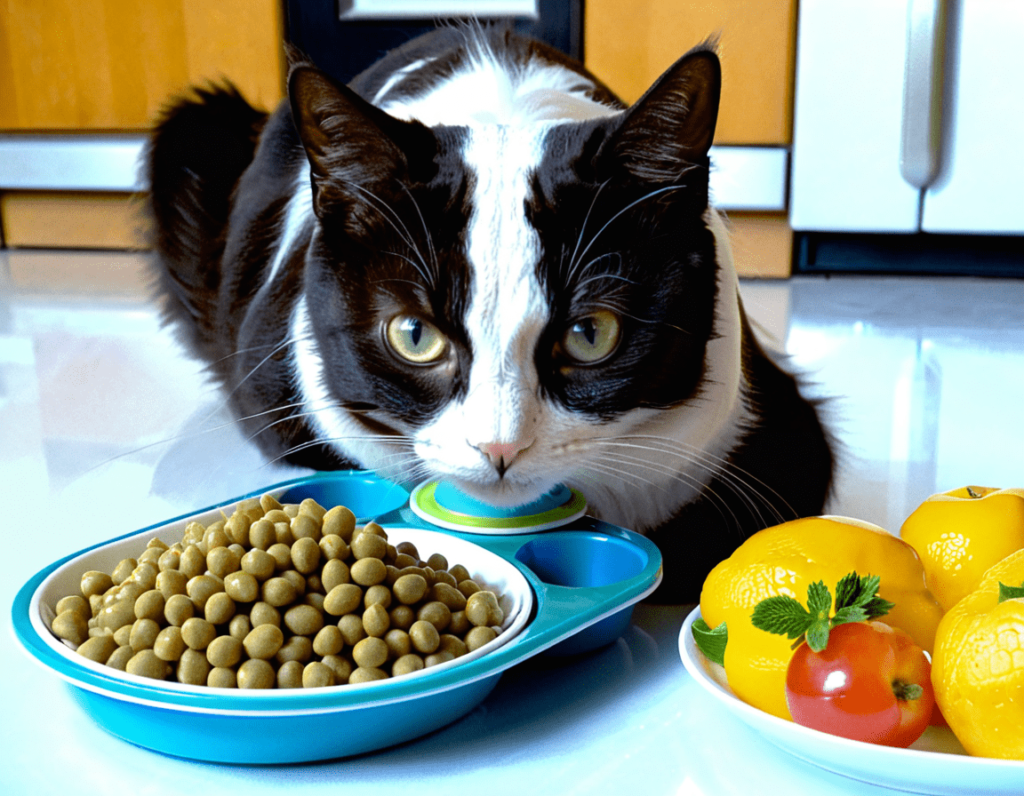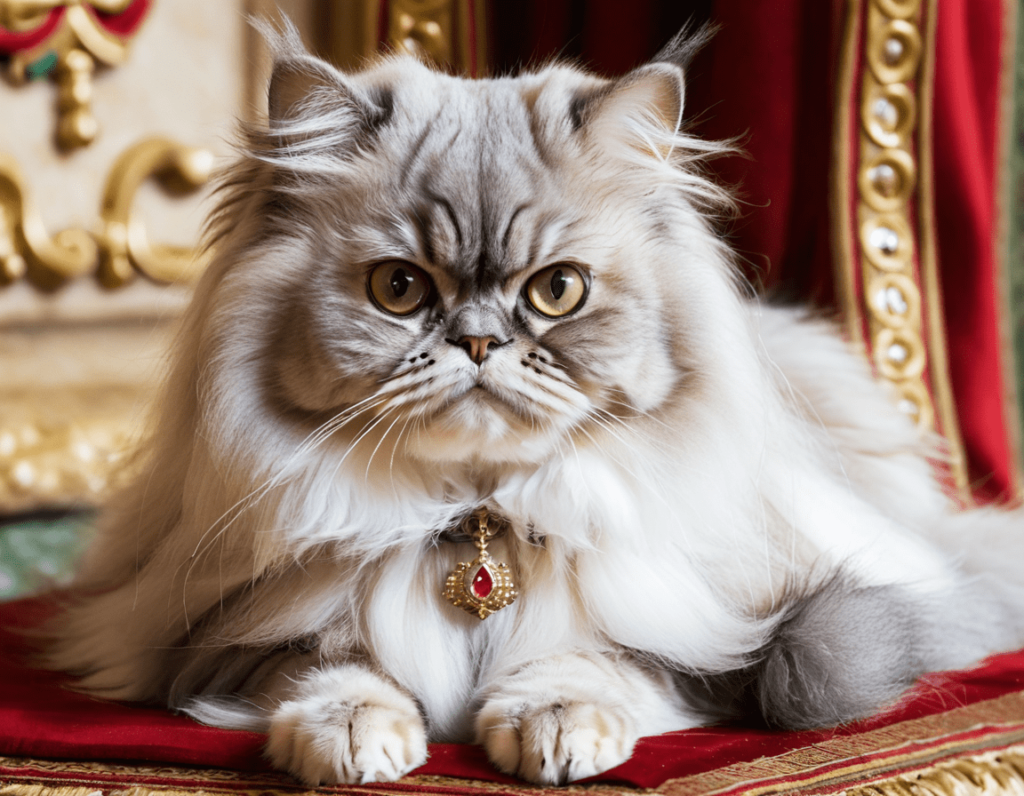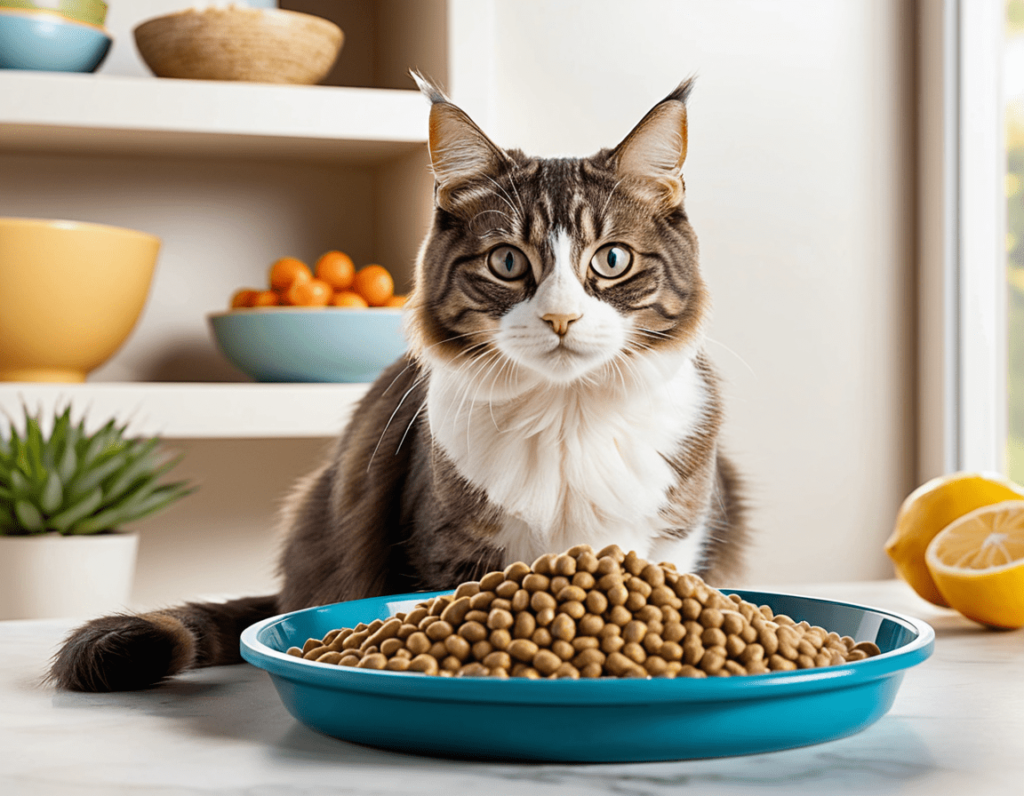
The Ultimate Guide to Your Cat’s Diet: What to Feed Your Feline Friend
We all know cats love to eat—and eat—and eat. But when it comes to feeding your cat, the goal is not just to fill up their food bowl. It’s about giving them the right nutrients to keep them happy, healthy, and, let’s face it, less likely to knock things off the counter when they’re hungry. So, let’s talk about the essentials of a balanced cat diet and what you need to know to keep your feline friend in top shape.
1. What Should a Healthy Cat Diet Include?
A balanced diet is key for your cat’s health. As obligate carnivores, cats need a good amount of protein in their diet to thrive. That means meat-based proteins, not just fillers or carbs, should be the star of their meals. A high-quality cat food will contain the right mix of protein, fat, and essential nutrients.
Key components of a healthy cat diet include:
- Protein: Cats need meat, whether it’s chicken, turkey, beef, or fish. This is their main source of energy and essential for their muscle development.
- Fat: Fat helps your cat absorb vitamins and provides them with energy. It’s like their own little battery pack!
- Taurine: This amino acid is essential for heart and eye health, and it’s only found in animal tissue. So, no, your cat isn’t going to thrive on a vegan diet.
- Vitamins and Minerals: These help support your cat’s immune system, skin health, and more. Look for foods that are enriched with vitamins like A, D, and E.
- Water: Hydration is key! Cats sometimes don’t drink enough water, so feeding them wet food can help keep them hydrated.
2. Dry vs. Wet Food: Which Is Better?
Now, the big debate: wet food or dry food? The truth is, both have their pros and cons. It’s all about finding the right balance for your cat.
- Wet Food: If your cat isn’t a big water drinker (let’s face it, they rarely are), wet food is a great way to increase their water intake. Plus, most cats find wet food more flavourful and satisfying. The downside? It can be pricier and doesn’t keep as long once opened.
- Dry Food: Dry food is convenient, cheaper, and has a longer shelf life. It’s also good for helping to keep your cat’s teeth clean, though you’ll still need to provide regular brushing. But dry food is lower in moisture, which can lead to dehydration if your cat isn’t drinking enough water.
The best solution? A mix of both! Feed your cat dry food in the morning and wet food at night, and make sure they always have access to fresh water.
3. Treats: Can My Cat Have Snacks?
Of course, your cat deserves a treat now and then (they already make you laugh every day with their antics). But remember: treats shouldn’t make up more than 10% of your cat’s daily calorie intake. While you might be tempted to spoil them with catnip-flavoured snacks or that gourmet tuna treat, moderation is key.
It’s also a good idea to choose healthy, low-calorie treats, especially if your cat is prone to weight gain. A couple of crunchy treats here and there are enough to keep them purring.
4. How Often Should I Feed My Cat?
Cats love routine. And when it comes to mealtime, consistency is important. You can choose to feed your cat:
- Multiple Small Meals: Some cats do better with multiple meals a day (think breakfast, lunch, dinner, and snacks). This can also help prevent the “hangry” behavior when they’ve gone too long without food.
- Free Feeding: For dry food, you might want to try free feeding, where you leave food out for your cat throughout the day. Just keep an eye on portion sizes to avoid overfeeding!
Generally, adult cats should be fed 2 to 3 times a day, but it’s important to adjust based on your cat’s age, size, and activity level.
5. How Do I Know If My Cat is Overweight?
It’s no secret—cats love to eat. And if we’re being honest, they’re often very good at making us feel guilty when we don’t feed them the moment they start that pleading meow. But if you’re noticing your cat is getting a little… rounder, it might be time to pay closer attention to their diet.
To check if your cat is overweight:
- You should be able to feel their ribs with a little bit of pressure (they shouldn’t be buried under a layer of fat).
- Look at their body shape. Is their tummy sagging, or do they have a noticeable “waist”?
- If they’re not as active as they used to be, it could be a sign that they’re carrying a bit too much weight.
Obesity can lead to serious health issues in cats, including diabetes and joint problems. Talk to your vet about portion sizes and diet adjustments if you think your cat might need to shed a few pounds.

6. What Are the Best Foods for Cats with Special Dietary Needs?
Just like people, cats can have special dietary needs as they get older or if they develop certain health conditions. Some examples include:
- Senior Cats: Older cats may need food that’s easier to digest and lower in calories to prevent weight gain.
- Cats with Kidney Issues: Cats with kidney disease often need a lower-protein, higher-moisture diet to help support their kidneys.
- Food Allergies: Some cats have sensitivities to certain ingredients (like grains or certain proteins), so a limited-ingredient diet may be needed.
Always consult your vet if you suspect your cat has dietary sensitivities or health problems, as they can guide you to the best food for their specific needs.
7. Can I Feed My Cat Human Food?
We know it’s hard to resist those adorable eyes when your cat gives you the “feed me” stare during dinner. But the truth is, some human foods are not safe for cats.
Here are a few foods that are off-limits:
- Chocolate: Cats, like dogs, should never eat chocolate. It can cause serious health issues.
- Onions and Garlic: These can cause anemia in cats.
- Dairy: While many cats love milk, most adult cats are lactose intolerant, which can lead to upset stomachs.
- Bones: Never feed your cat bones — they can splinter and cause blockages or injury.
That said, you can occasionally give your cat some cooked chicken, turkey, or a little bit of fish — just make sure it’s plain and free of seasoning.
8. Should I Consider Homemade or Raw Food for My Cat?
The idea of feeding your cat homemade or raw food can be tempting, especially if you want to ensure the freshest ingredients. However, it’s important to proceed with caution. Cats have specific nutritional needs, and preparing a balanced homemade or raw diet requires a lot of research, knowledge, and preparation to make sure they’re getting everything they need.
If you’re thinking about switching to homemade food or raw meals, here are some things to keep in mind:
- Consult your vet: Cats have specific dietary requirements, like taurine, arachidonic acid, and vitamin A, which are naturally found in animal tissues but can be difficult to balance in a homemade diet.
- Raw food risks: Raw diets are controversial because they carry the risk of bacterial contamination (like Salmonella) and might not be nutritionally complete. If you choose raw food, ensure it’s specially formulated for cats and sourced from a reputable supplier.
- Commercial alternatives: If you want to make sure your cat is getting the best of both worlds, some brands offer high-quality freeze-dried raw food or homemade food options that are nutritionally balanced.
Ultimately, commercial cat food (wet or dry) that meets the standards of the Association of American Feed Control Officials (AAFCO) is usually the safest and easiest choice for most cat owners. But if you’re interested in raw or homemade food, make sure to do thorough research and consult your vet.
9. How Do I Transition My Cat to a New Diet?
Whether you’re switching to a new brand of food or changing from dry to wet food (or vice versa), it’s important to transition your cat slowly. Abrupt changes in diet can upset your cat’s stomach, leading to vomiting or diarrhea. Here’s how to make a smooth transition:
- Start Slow: Begin by mixing a small amount of the new food with their current food. Over the course of a week to 10 days, gradually increase the amount of new food while decreasing the old food.
- Monitor for Issues: Keep an eye on your cat’s health during the transition. If they experience any digestive issues, slow down the process and try to give their stomach more time to adjust.
- Patience is Key: Cats can be creatures of habit, and they might not immediately embrace a new food. Be patient and give them time to adjust, even if they turn up their noses at the new food at first.
If your cat refuses to eat or shows signs of digestive distress, it’s best to consult your vet to ensure the new food is appropriate for their needs.
10. Is My Cat Getting Enough Fiber?
Fiber might not be the first thing you think about when feeding your cat, but it plays an important role in their digestive health. It helps regulate bowel movements, prevents constipation, and can even assist in controlling weight by making your cat feel full.
Cats don’t require a ton of fiber, but the right amount can be beneficial. Foods with fiber sources like pumpkin, beet pulp, or even rice bran can be a great addition to your cat’s diet. If your cat is experiencing constipation or seems to be struggling with hairballs, a fiber supplement or food formulated with extra fiber can help.
As always, though, too much fiber can cause digestive upset, so look for foods that are formulated with a balanced amount.
11. The Bottom Line on Cat Diets: Keep It Balanced and Fun!
Ultimately, a balanced diet is key to your cat’s overall health and happiness. They may act like they’re too sophisticated for certain foods, but trust us — if you feed them the right mix of nutrients, they’ll be purring with satisfaction (and maybe even following you around the kitchen for more treats).
And don’t forget — feeding your cat is more than just a routine task. It’s an opportunity to bond with your furry companion, watch them enjoy their meals, and maybe even give them that extra treat after a long day of napping and playing.
So next time you’re filling up your cat’s bowl, just remember: a healthy, happy cat equals a happy owner. And as for that little “feed me” meow? Well, it’s just their way of saying they appreciate your effort. (Or maybe they’re just hoping you’ll toss them a bite of chicken. Who’s to say?)

FAQs About Cat Diet
Feeding your cat is about more than just filling their bowl — it’s about making sure they get the proper nutrition to live a long, healthy, and happy life. If you’re new to cat ownership or just want to brush up on your feline feeding skills, here are some frequently asked questions to help guide you on your cat’s diet.
1. What should I feed my cat?
Answer: Cats are obligate carnivores, which means they need a diet primarily made of meat. A balanced cat diet should include:
- Protein: Chicken, turkey, fish, or beef.
- Fat: Helps your cat stay energized.
- Taurine: An essential amino acid found only in animal tissues that supports heart and eye health.
- Vitamins and minerals: For overall health, such as Vitamin A and D.
Wet food can be great for hydration, while dry food offers convenience and is easier to store.
2. How often should I feed my cat?
Answer: Adult cats typically need 2-3 meals a day. You can either:
- Feed your cat at specific times, such as breakfast, lunch, and dinner.
- Free-feed dry food if your cat is active and doesn’t overeat. Just ensure they have fresh water available at all times.
Kittens, pregnant, or nursing cats may need more frequent meals due to their higher energy needs.
3. Is it okay to give my cat treats?
Answer: Yes, cats love treats! However, you should limit them to about 10% of your cat’s daily calorie intake to prevent overfeeding. Opt for healthy treats, such as those designed for dental health, and avoid giving them human food. Keep in mind that treats should supplement their regular meals, not replace them.
4. Can I feed my cat human food?
Answer: While it can be tempting to share your food with your furry friend, some human foods can be harmful to cats. Common foods to avoid include:
- Chocolate: Toxic to cats.
- Onions and garlic: Can cause anemia.
- Dairy: Many cats are lactose intolerant and will have digestive issues.
- Bones: They can splinter and cause choking.
You can give small amounts of cooked meat, like chicken or turkey, as a treat, but always avoid seasoning.
5. How can I tell if my cat is overweight?
Answer: Obesity is common in cats, but it’s important to maintain a healthy weight. To check if your cat is overweight:
- You should be able to feel their ribs with slight pressure (they shouldn’t be hidden under fat).
- Your cat should have a visible waistline when viewed from above.
- If your cat is inactive, has difficulty jumping, or seems lethargic, these could be signs of weight problems.
If you’re concerned about your cat’s weight, consult your vet to adjust their diet or portion sizes.
6. Is wet food or dry food better for my cat?
Answer: Both wet and dry foods have their benefits, and many cat owners choose to feed a combination of both.
- Wet food is high in moisture, which helps keep your cat hydrated. It also tends to be more palatable, so picky eaters might enjoy it more.
- Dry food is more convenient, has a longer shelf life, and helps keep your cat’s teeth cleaner.
If you feed dry food, make sure your cat is drinking plenty of water to stay hydrated.
7. What should I do if my cat is a picky eater?
Answer: If your cat is turning their nose up at their food, try the following:
- Switch to a different flavor: Cats often have preferences, so try offering a new flavor or texture.
- Warm it up: Warming their food can make it more aromatic and enticing.
- Add wet food: Mixing in a little wet food with dry food can make it more appealing.
- Consult your vet: If your cat’s eating habits suddenly change, it could indicate an underlying health issue.
8. Can I switch my cat’s food?
Answer: Yes, but do it gradually! Sudden changes in diet can upset your cat’s stomach. To switch their food:
- Start by mixing a small amount of the new food with their current food.
- Gradually increase the new food while decreasing the old food over a week to 10 days.
This slow transition helps avoid digestive problems like vomiting or diarrhea.
9. How much should I feed my cat?
Answer: The amount of food your cat needs depends on their age, size, and activity level. Generally, an adult cat requires about 20 calories per pound of body weight. For example, a 10-pound cat might need around 200 calories a day. Always check the serving size recommendations on your cat’s food packaging, and consider consulting your vet to adjust portions if necessary.
10. What is the best food for my senior cat?
Answer: Senior cats often have different nutritional needs, such as lower calorie content to prevent obesity or foods that are easier to digest. Look for:
- Easier-to-digest protein: Like chicken or turkey.
- Joint support: Foods with added glucosamine and chondroitin for their joints.
- Moisture-rich food: Wet food is especially good for older cats who may not drink enough water.
If your cat has specific health concerns, your vet may recommend a prescription diet.
11. Can my cat have a vegetarian diet?
Answer: Cats are obligate carnivores, meaning they require animal-based proteins to thrive. A vegetarian diet is not suitable for cats, as it doesn’t provide the essential nutrients they need, like taurine and arachidonic acid. Stick to meat-based foods to ensure your cat gets a nutritionally balanced diet.
Final Thoughts
Feeding your cat is an essential part of keeping them healthy and happy. By providing them with a balanced diet of high-quality food, treats in moderation, and plenty of fresh water, you’re ensuring a long and vibrant life for your furry companion. Don’t forget to adjust their food intake as they age or if their activity level changes, and always consult your vet if you have concerns about their diet or health.


